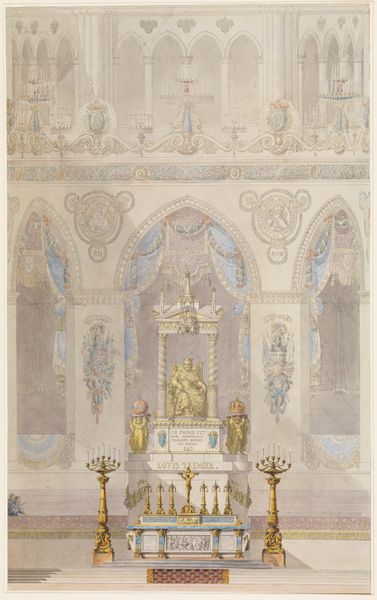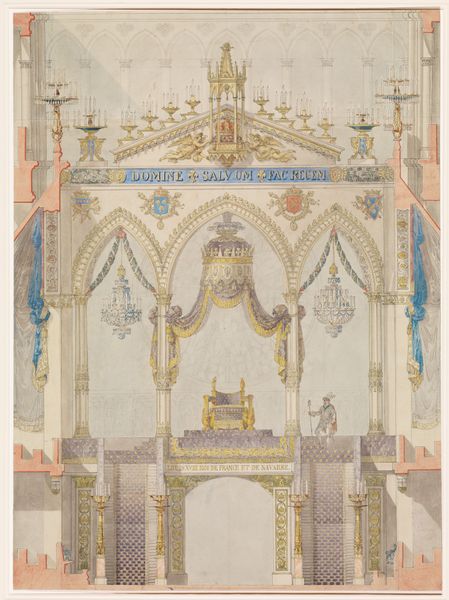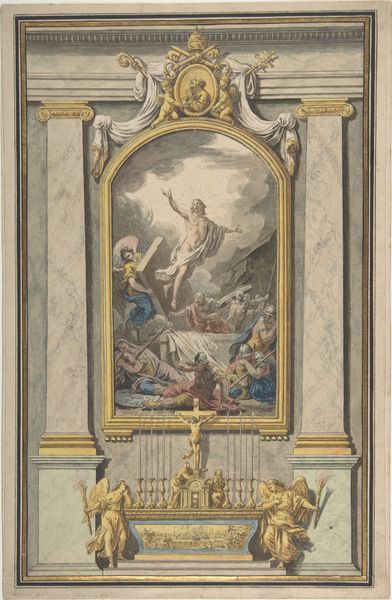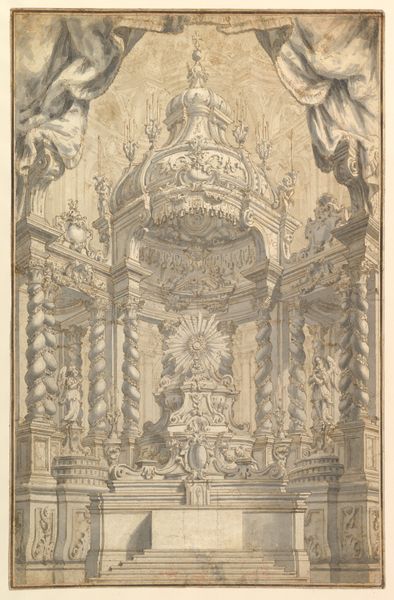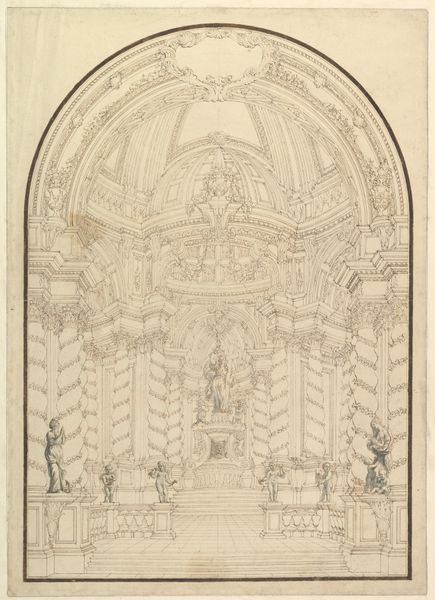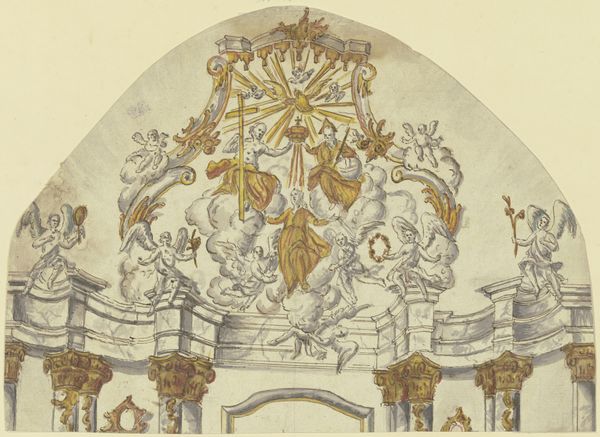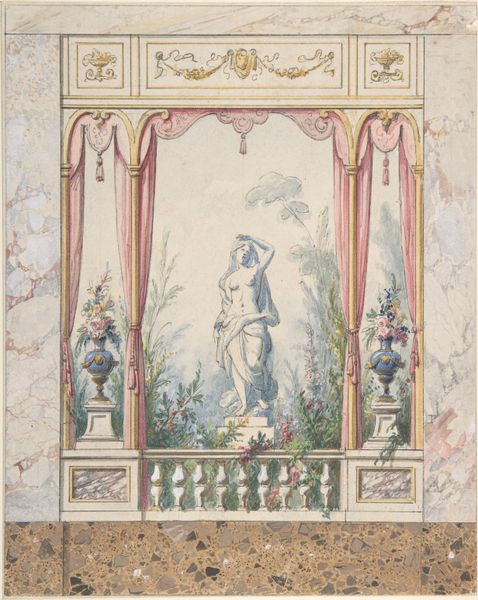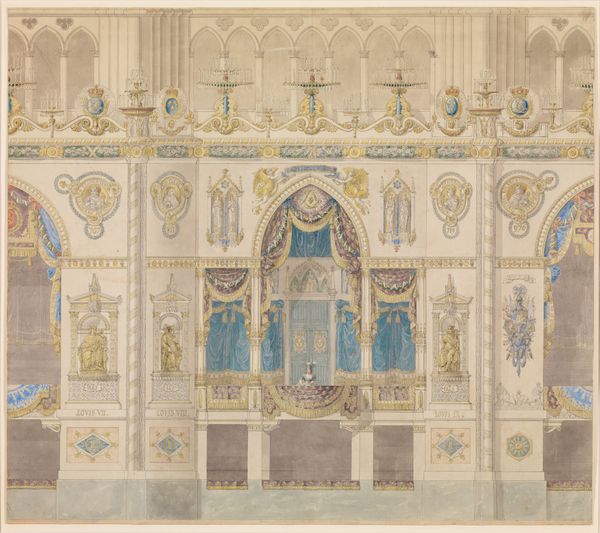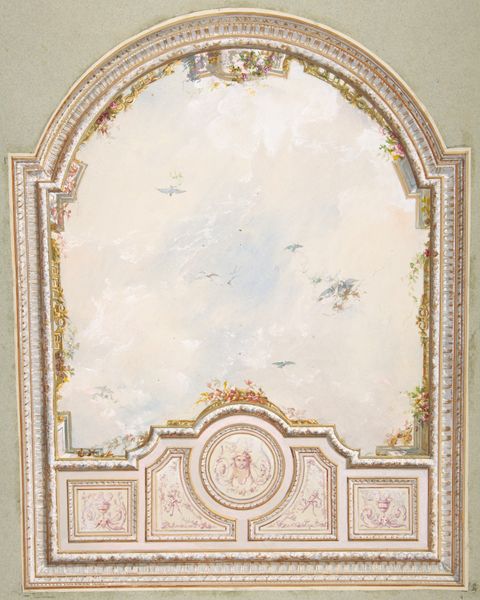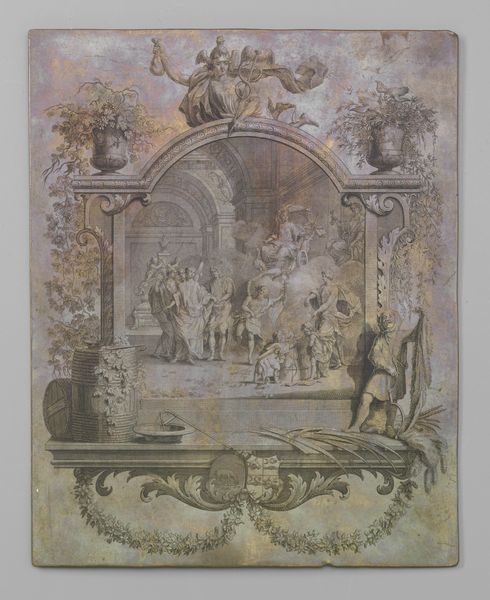
Interior Elevation of Reims Cathedral with a Statue of King Louis I 1815
0:00
0:00
drawing, print, architecture
#
portrait
#
drawing
#
neoclacissism
# print
#
classicism
#
history-painting
#
architecture
Dimensions: 29 15/16 x 17 1/16 in. (76 x 43.3 cm)
Copyright: Public Domain
Editor: So, here we have Charles Percier’s “Interior Elevation of Reims Cathedral with a Statue of King Louis I,” created around 1815. It’s a drawing, maybe a print, showcasing Neoclassical style. What first strikes me is the overwhelming amount of symbolism, and its formal arrangement in the architectural drawing. What's your take on this artwork? Curator: It's fascinating how Percier uses this drawing to evoke a sense of historical legitimacy and power, layering imagery one upon the other. Notice how the architectural elements are almost secondary to the symbols. Each crown, each coat of arms, serves as a marker of identity and authority, almost as if the very stones of Reims are meant to legitimize King Louis. Consider the psychological impact, the intended cultural memory, Percier is attempting to build through this visual vocabulary. Editor: Building cultural memory, how so? Is there an intent beyond honoring King Louis? Curator: Precisely. Think about what was happening in France around 1815. The Napoleonic era had just ended, and the monarchy was being restored. This image isn't just about Louis I; it’s about re-establishing the Bourbon dynasty and all that it signified: divine right, stability, tradition. The statue of Louis I acts almost as a foundation, grounding the new reign in a mythologized past. See how every decorative element above reinforces the message of the restored monarchy, not through force, but cultural presence. Editor: That's interesting. So, the visual symbolism is deliberately constructing a specific narrative about power and continuity after a turbulent period? Curator: Exactly! Every fleur-de-lis, every royal emblem, works to reconnect the present with an idealized past, thereby stabilizing the image, literally and figuratively, of the restored monarchy in the cultural consciousness. The image becomes an argument, a persuasive symbolic construction. Editor: That sheds a new light on the piece. I initially saw it as just a historical drawing, but I understand how loaded and purposeful each of those symbols is. Curator: Yes. The careful study of these symbols offers deep insight into the mindset of a society grappling with its identity. It helps to remind us that images often speak louder and, sometimes, with more consequence than words.
Comments
No comments
Be the first to comment and join the conversation on the ultimate creative platform.
